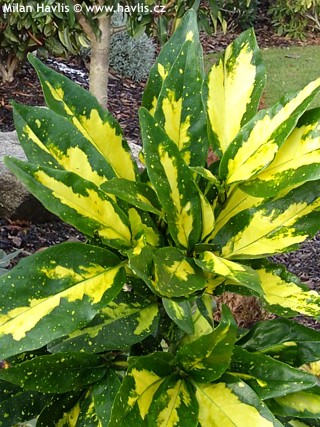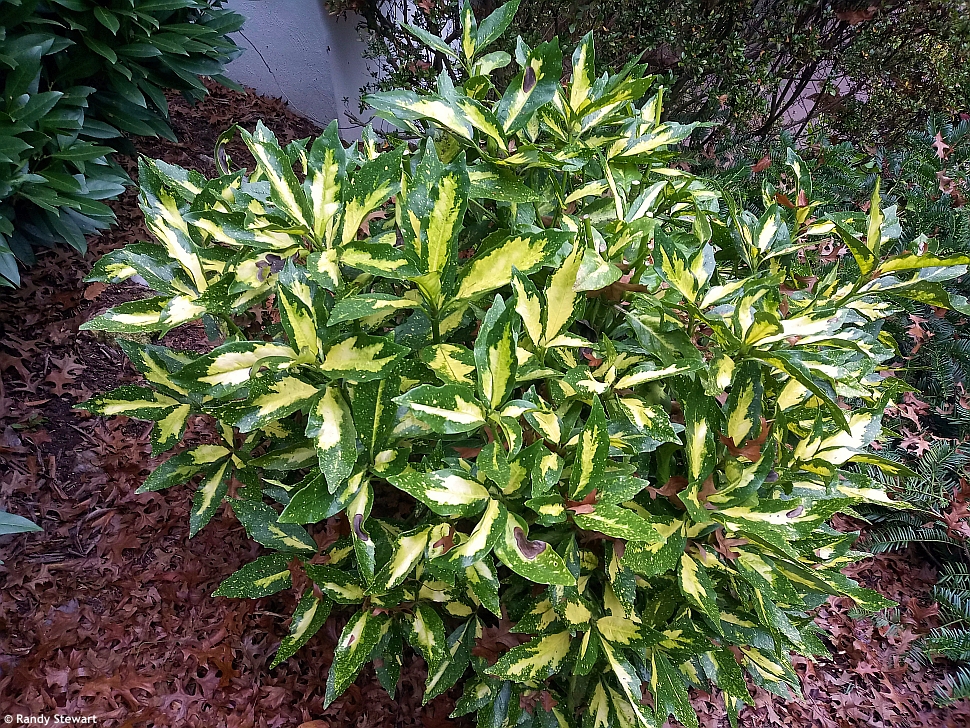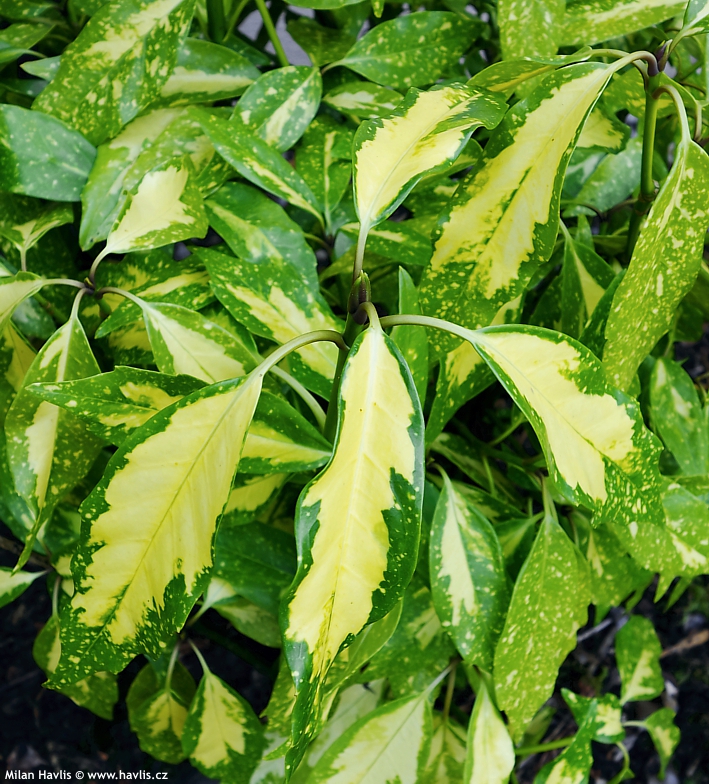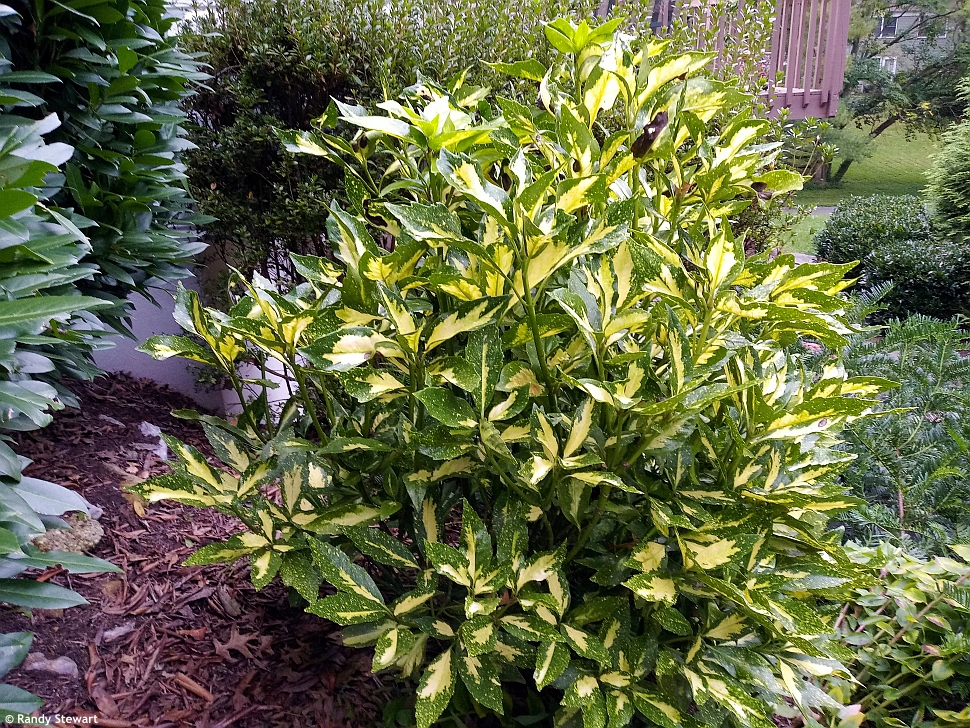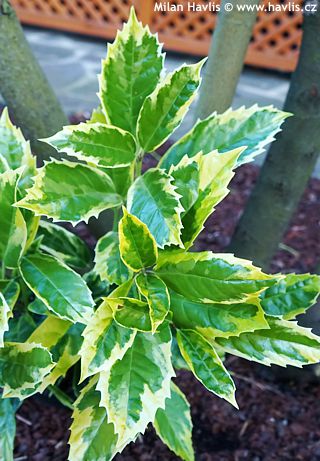Aucuba japonica 'PICTURATA' Japanese aucuba, spotted laurel
Aucuba
This evergreen shrub is a commonly known favourite especially in Britain and in milder parts of humid regions of Germany and Benelux. The first specimen was brought from Japan to Europe in 1783, and has been sought after ever since for its unusual shape of foliage and beautiful variegation on some cultivars hence its name spotted laurel.
If you like vivid colours and your garden has a more or less exotic design don’t hesitate to fall in love with this variety of spotted laurel called Picturata. This evergreen shrub bears large, glossy, mid green leaves with rich yellow centres and spots all over the leaves. The leaves are ovate to elliptic, sparsely toothed at margins. Picturata is a female variety which may produce bright red berries if pollinated by a male plant nearby. It usually grows slowly or moderately in humus rich soils and makes a shrub 1.5m tall and wide. Such uniquely coloured, large-leaved shrub will find its place among plants with darker foliage, or as a specimen plant where you call fully admire its beauty.
Commonly considered a house plant, spotted laurel is suitable for outdoor cultivation, too. It has to be grown in part shade or deep shade, it does not withstand afternoon sun, direct winter sunlight, and early spring sun. Provide it with fertile, constantly moist but well-drained, preferably acid to neutral soil. Pruning is possible in early spring after all frosts. Older plants can be pruned medium hard for rejuvenation. Extra watering is advisable in frost-free periods of winter when the ground is not frozen. Hardy to approx. -24°C (USDA zone 6).
Last update 18-02-2012

































